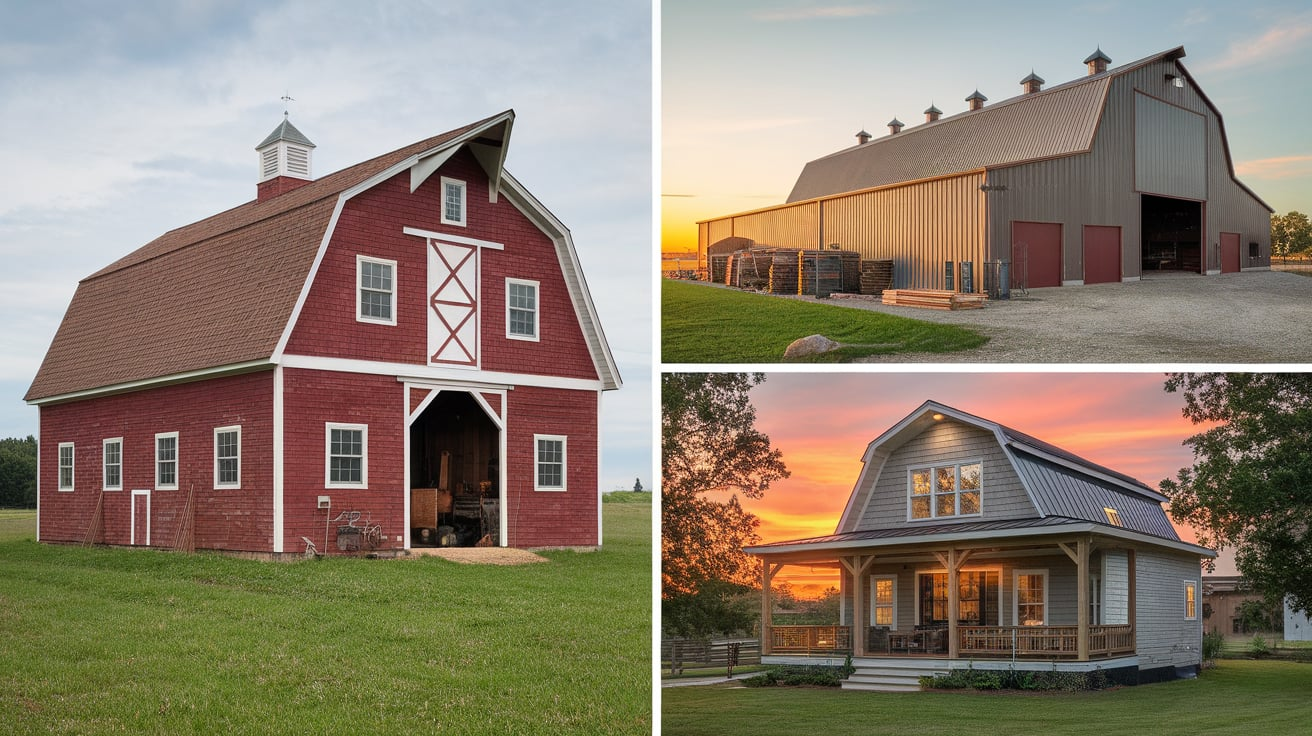When I first learned about barns, I was surprised by the variety of styles beyond the classic red barn.
Some barns are designed for storage, others for animals, and some even serve as living spaces or event venues.
Each style has its own history and purpose, from traditional barns like the English or Dutch barn to newer ones like pole or monitor barns.
If you’re curious about barn types, this guide will break down the most common styles, helping you recognize them or choose the right one if you’re considering building or restoring a barn.
Understanding Barn Styles
Barns come in various shapes and sizes, each with a specific purpose. Some are used for storing hay or tools, while others house animals or even host events.
The style of a barn often depends on its location, intended use, and era.
Traditional barns, made mostly of wood, offer a classic look, while modern barns use materials like metal or prefabricated parts.
Understanding different barn styles helps you appreciate their design and function, whether you prefer rustic charm or a more contemporary space.
Traditional Barn Styles
Below are some classic barn styles that have stood the test of time and still inspire builders today.
1. English Barn
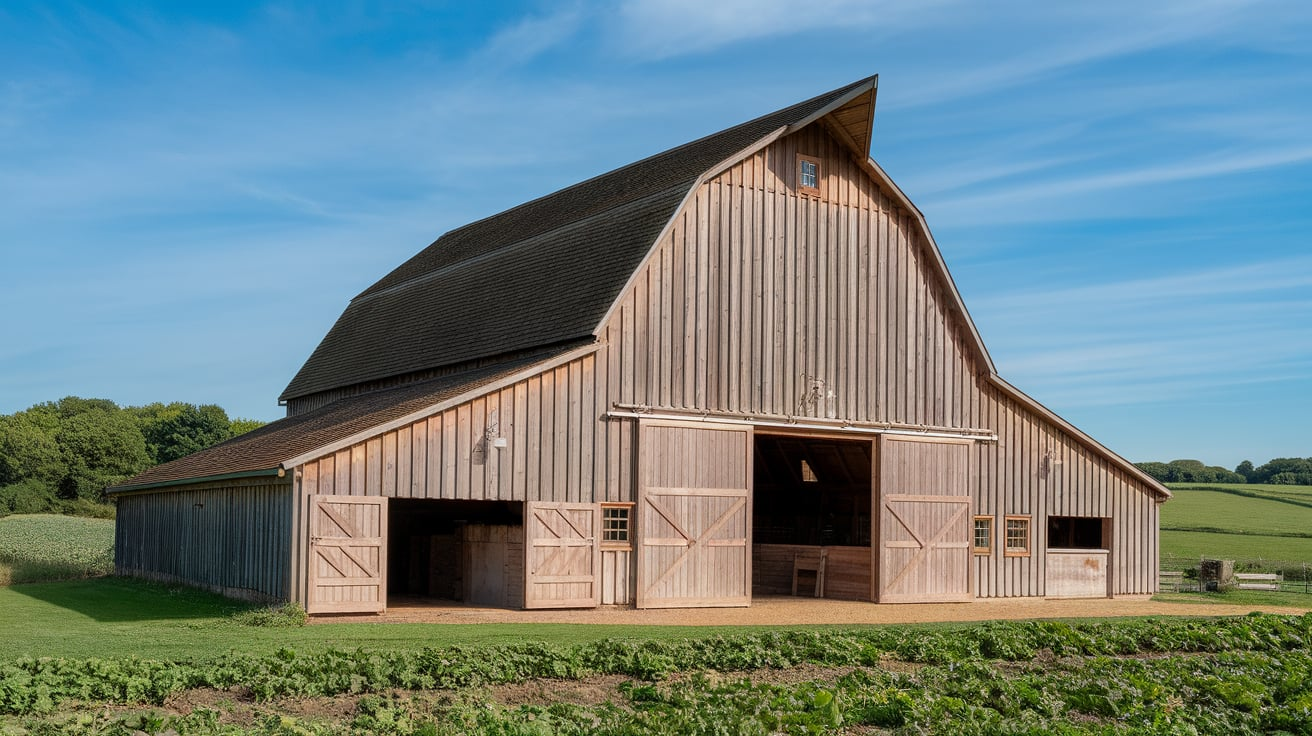
The English barn is one of the oldest styles in America. It’s easy to spot with its long, simple shape and doors on the side.
Inside, it usually has three main sections with space for hay, animals, and tools.
These barns were often built without a basement or loft, which makes them different from other old barns.
They’re usually made of wood and have a gable roof. You’ll see them mostly in the Northeast, where early settlers first built them.
The simple layout makes them easy to use and easy to restore today.
2. Dutch Barn
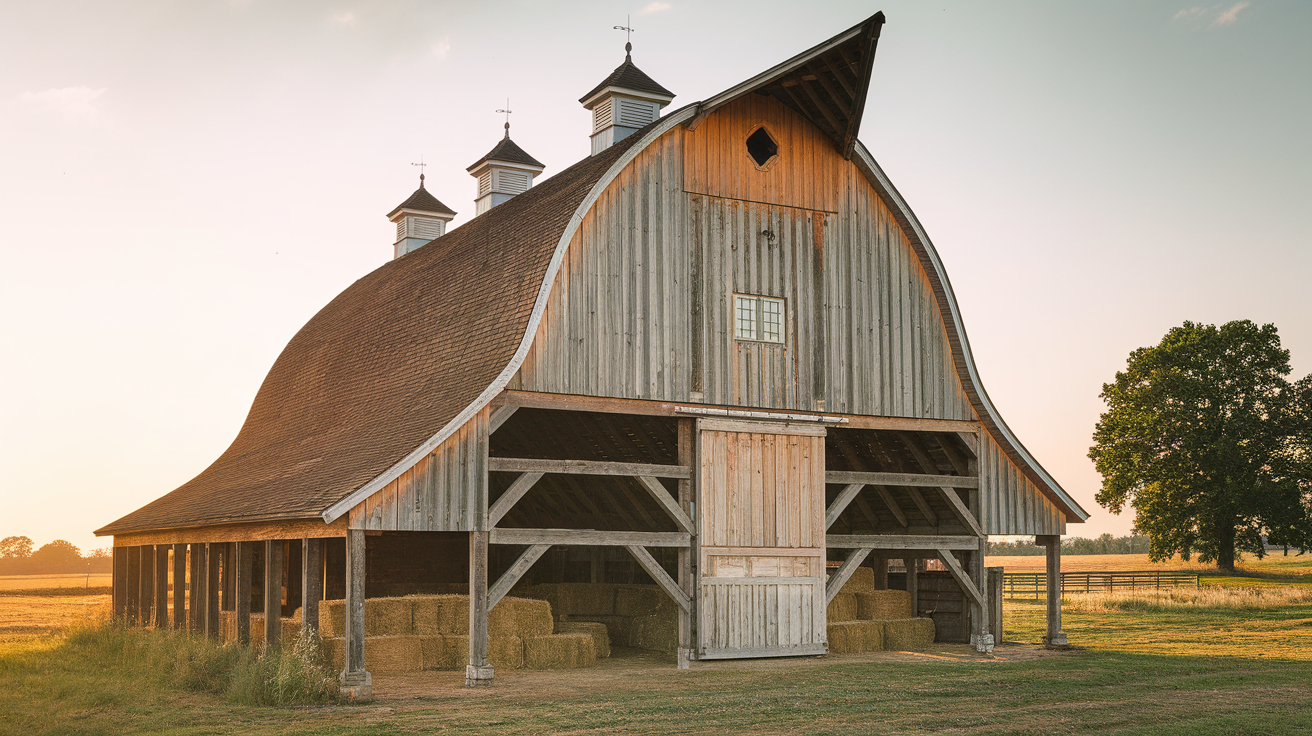
Dutch barns are known for their wide, rounded roofs and strong beams inside. These barns were built by early Dutch settlers and were made to last.
Their design gives a lot of space for hay and grain storage. Inside, you’ll find big posts and a central area that feels open and roomy.
Not many of these barns are still standing, so they’re often seen as special and historic.
They’re great examples of old-world craftsmanship. Even modern barns sometimes copy the Dutch roof style.
3. Pennsylvania Barn
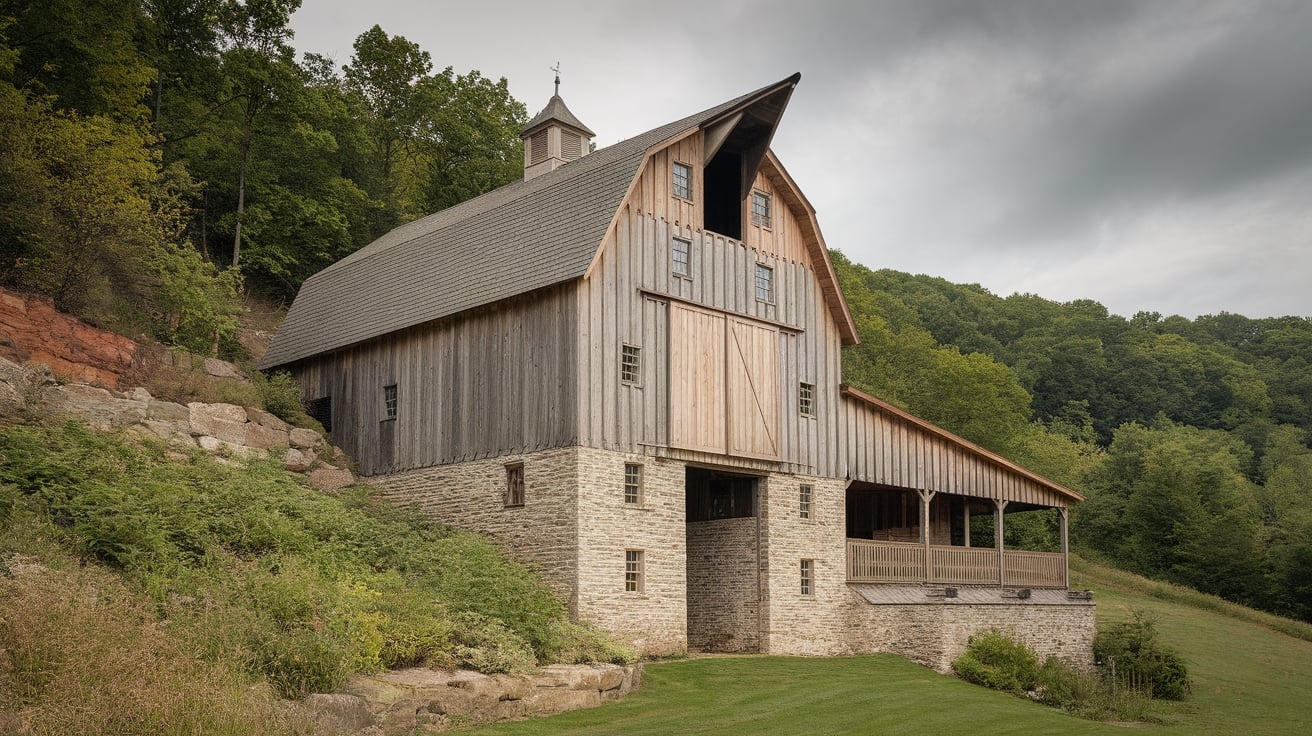
The Pennsylvania barn is famous for its overhanging second floor, called a forebay. It’s often built into a hill, which lets farmers reach the top level from the back.
This smart design made it easy to move hay and grain into the upper area while keeping animals on the bottom level.
These barns have a mix of stone and wood and reflect German and Swiss building styles.
They’re common in the mid-Atlantic region, especially in Pennsylvania. The extra space and smart layout made them popular for big farms.
4. New England Barn
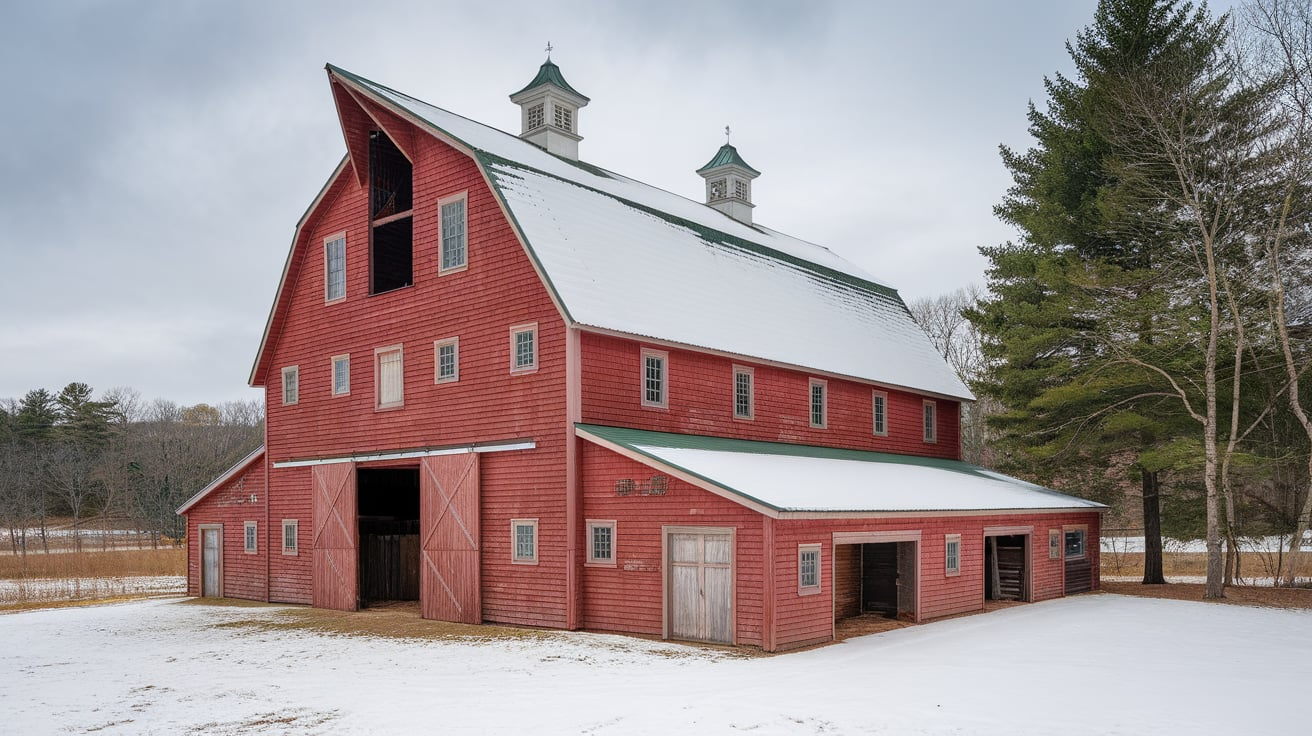
The New England barn is tall, narrow, and has doors on the end instead of the side. These barns were common in the 1800s and were mostly used for livestock and hay.
Many had basements to store manure, which helped farmers keep the upper level cleaner. Their strong timber frames helped them last through harsh winters.
You’ll often see them in rural parts of Vermont, Maine, and Massachusetts. This barn style is simple but sturdy, perfect for the rough weather of the Northeast.
5. Bank Barn
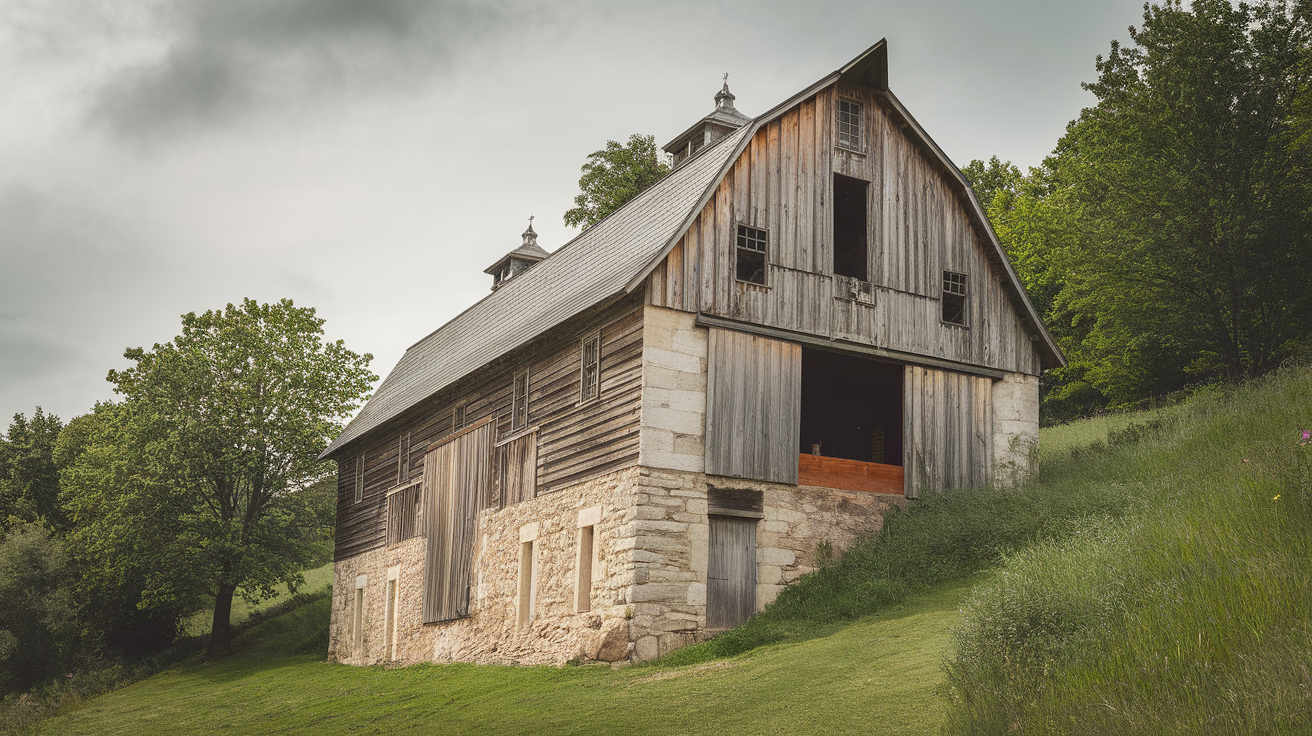
A bank barn is built into a slope or hill, which means both floors can be reached from the ground.
The lower level was used for animals, and the upper level for storing crops. This smart design saved time and made work easier for farmers.
Bank barns often have stone or wood walls and a big, sloping roof. You’ll find them mostly in areas with rolling hills, like Pennsylvania and Ohio.
These barns make good use of natural land and show how smart old farm builders were.
6. Crib Barn
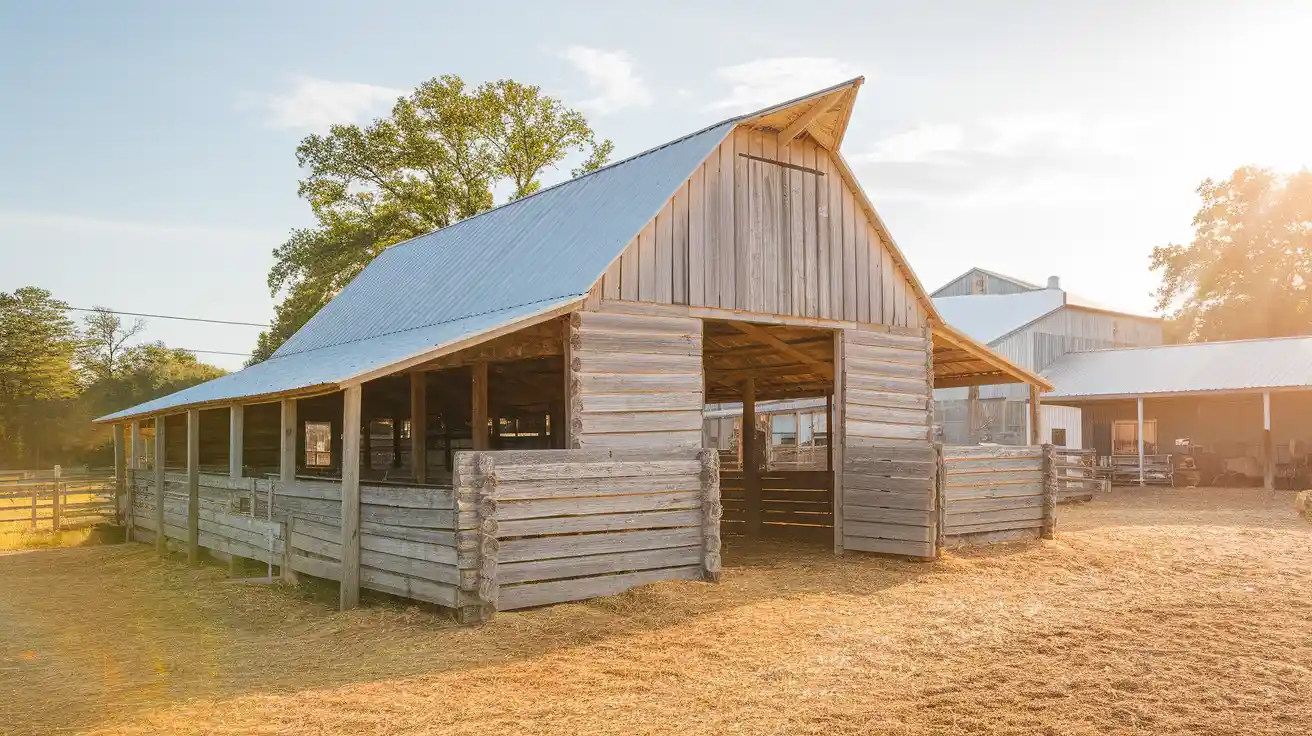
Crib barns are made up of several small storage units, or “cribs,” usually arranged side by side.
These barns were mainly used in the southern U.S. for storing corn and sometimes for sheltering animals.
They often have an open central passage called a “drive-through” that makes it easy for wagons to pass through. Crib barns are usually made from logs or rough-cut wood.
Their design is basic but very functional for smaller farms. This style shows how farmers made the most of what they had available.
7. Round Barn
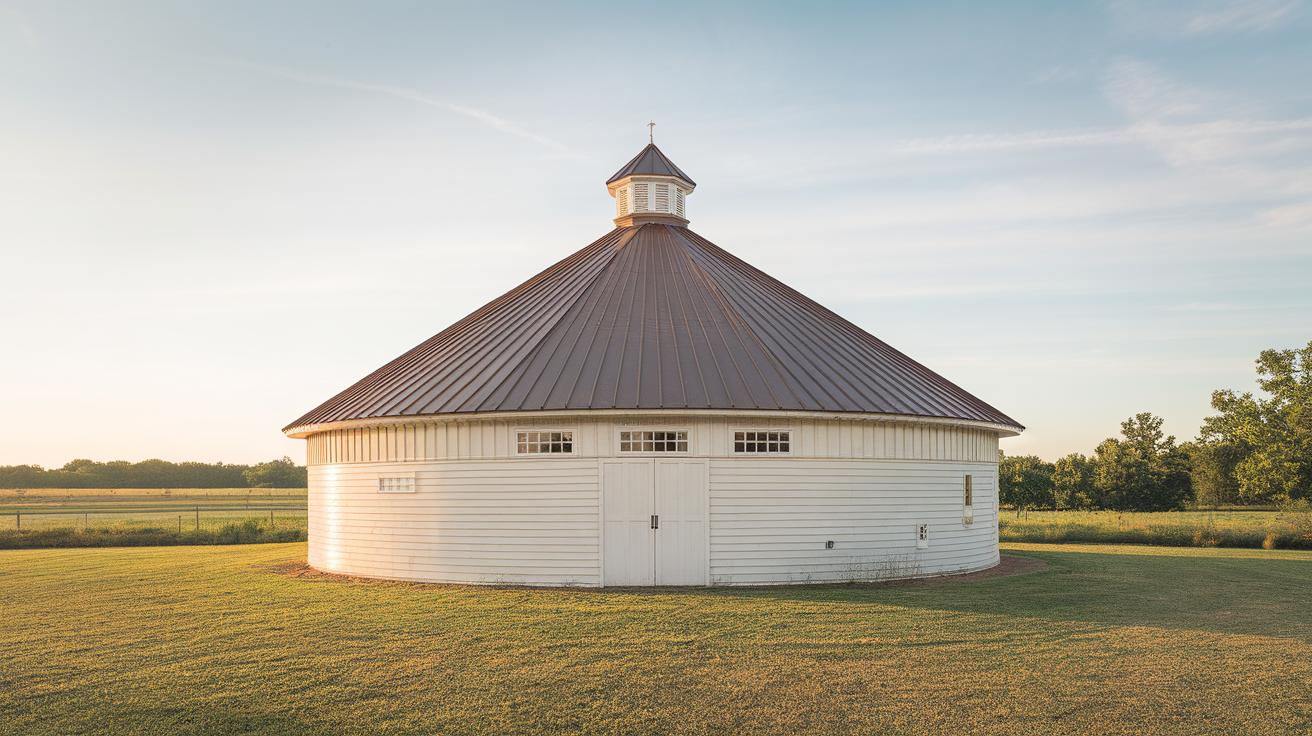
Round barns have a circular shape that helps save space and makes feeding animals easier. The roof often comes to a point in the center, like a big dome.
These barns became popular in the late 1800s and early 1900s because they were efficient and strong against the wind.
Inside, the layout allows farmers to move around easily. Round barns are less common today but are still admired for their unique look and smart design.
They stand out and are often seen as landmarks.
Modern Barn Styles
Modern barns are built with new materials and smart layouts that make farm life easier and more flexible.
8. Pole Barn
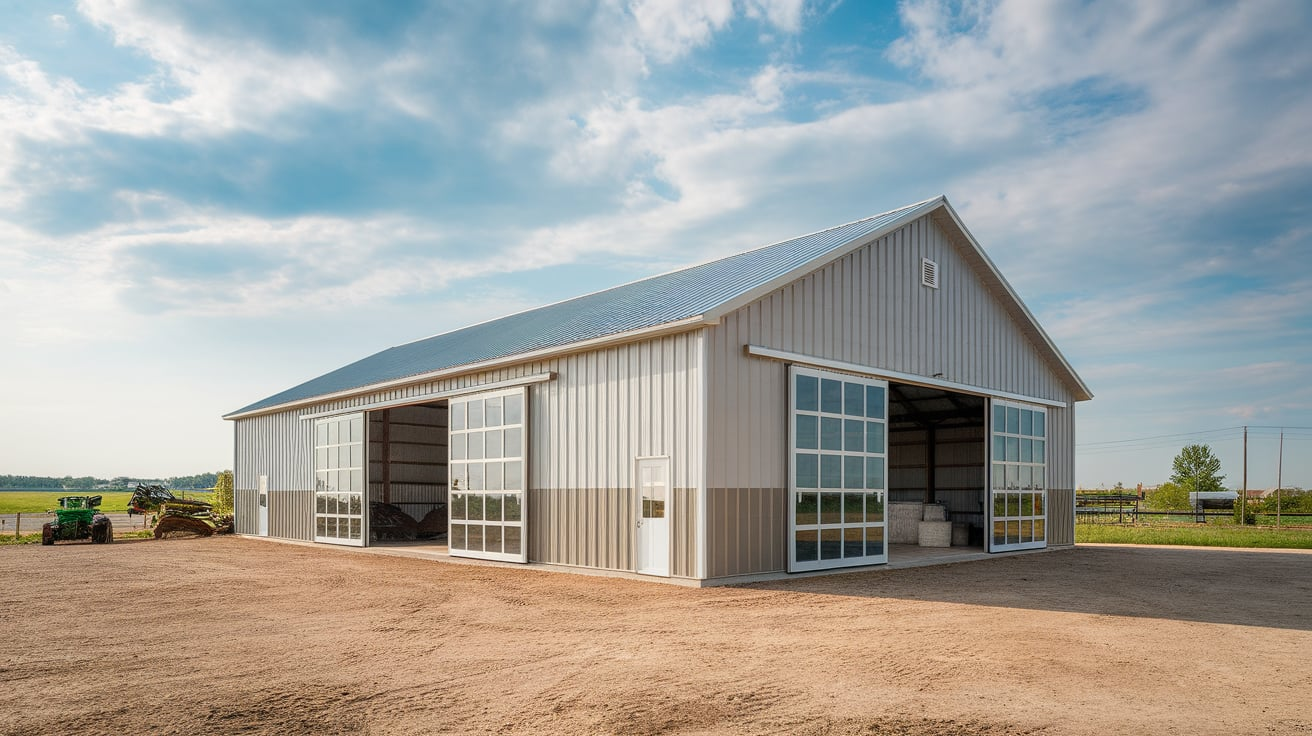
Pole barns are one of the most popular modern barn styles today.
They’re built using large wooden or metal posts set deep into the ground, so there’s no need for a full foundation. This makes them faster and cheaper to build.
You can use a pole barn for almost anything – storing equipment, housing animals, or even turning it into a workshop or garage.
The open floor plan gives you lots of space to move around.
These barns are simple but very strong and easy to customize. They’re a great pick for anyone who wants a budget-friendly building.
9. Monitor Barn
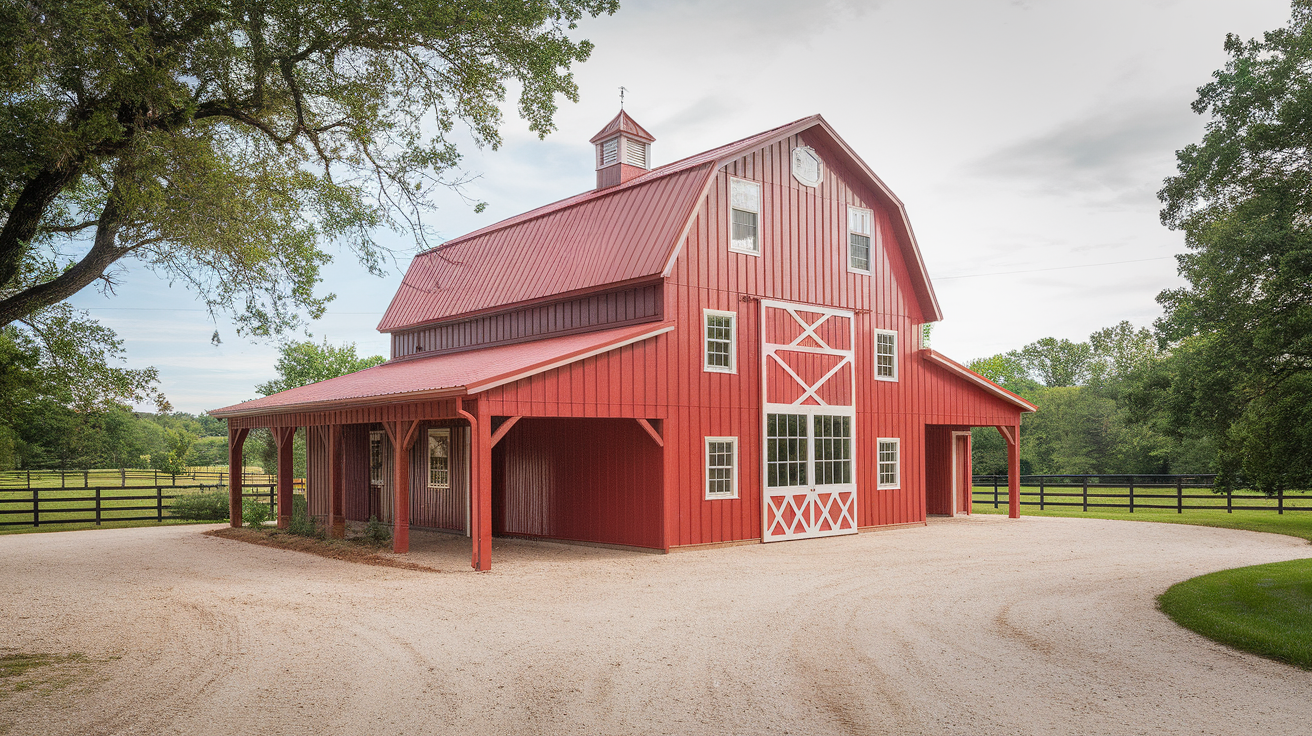
Monitor barns are easy to spot thanks to their raised center roof. This extra section, called a “monitor,” adds height, natural light, and better air flow inside the barn.
It was originally made for hay storage, but now helps keep animals cool and adds extra space.
These barns look like a mix of old and new, which makes them a favorite for people who want a classic style with modern benefits.
They’re often used as horse barns, storage spaces, or even homes. The tall center also lets you install fans or windows for better comfort.
10. Modular Barn
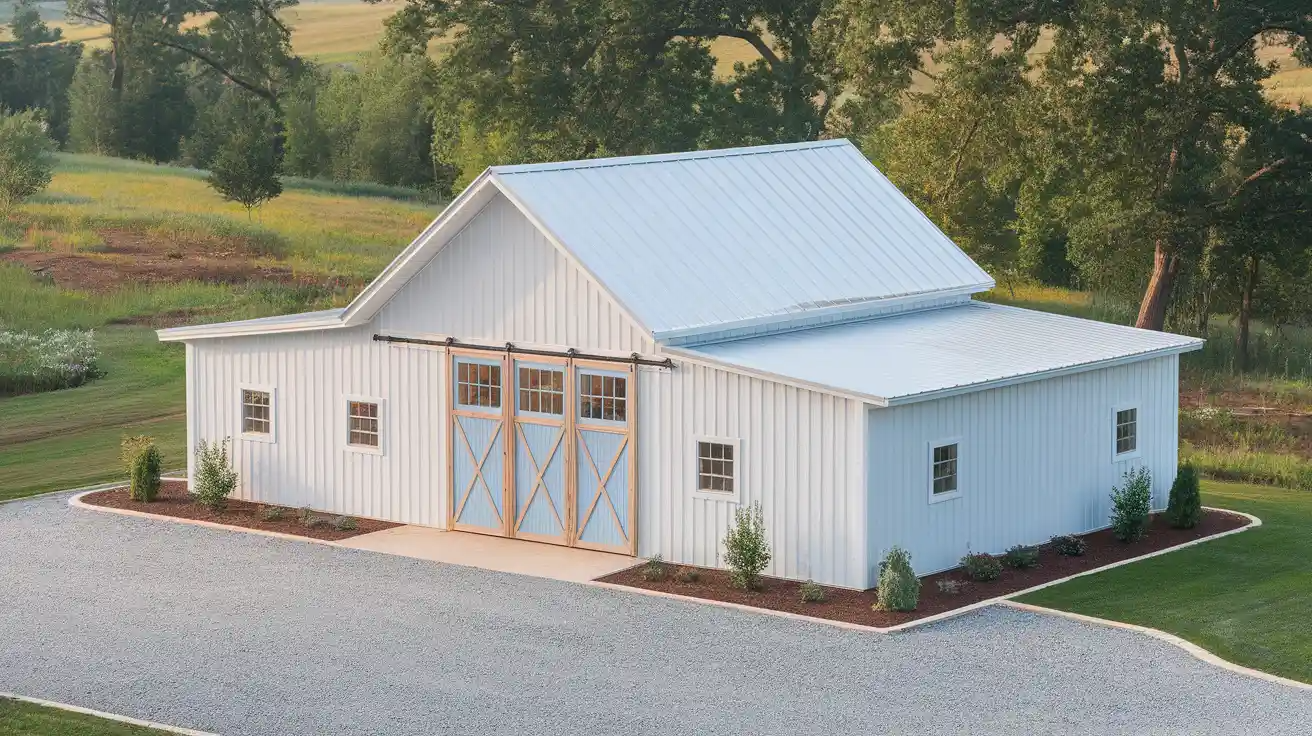
Modular barns are built in sections at a factory and then put together on your land. This method saves time and cuts down on construction mess.
It also allows for more control over the design and materials. You can choose the number of stalls, windows, and layout that fits your needs.
Modular barns work well for horses, livestock, or equipment.
They look just like traditional barns once they’re finished, but the build is faster and easier. Many people like this option because it’s both efficient and reliable.
11. Shed Row Barn
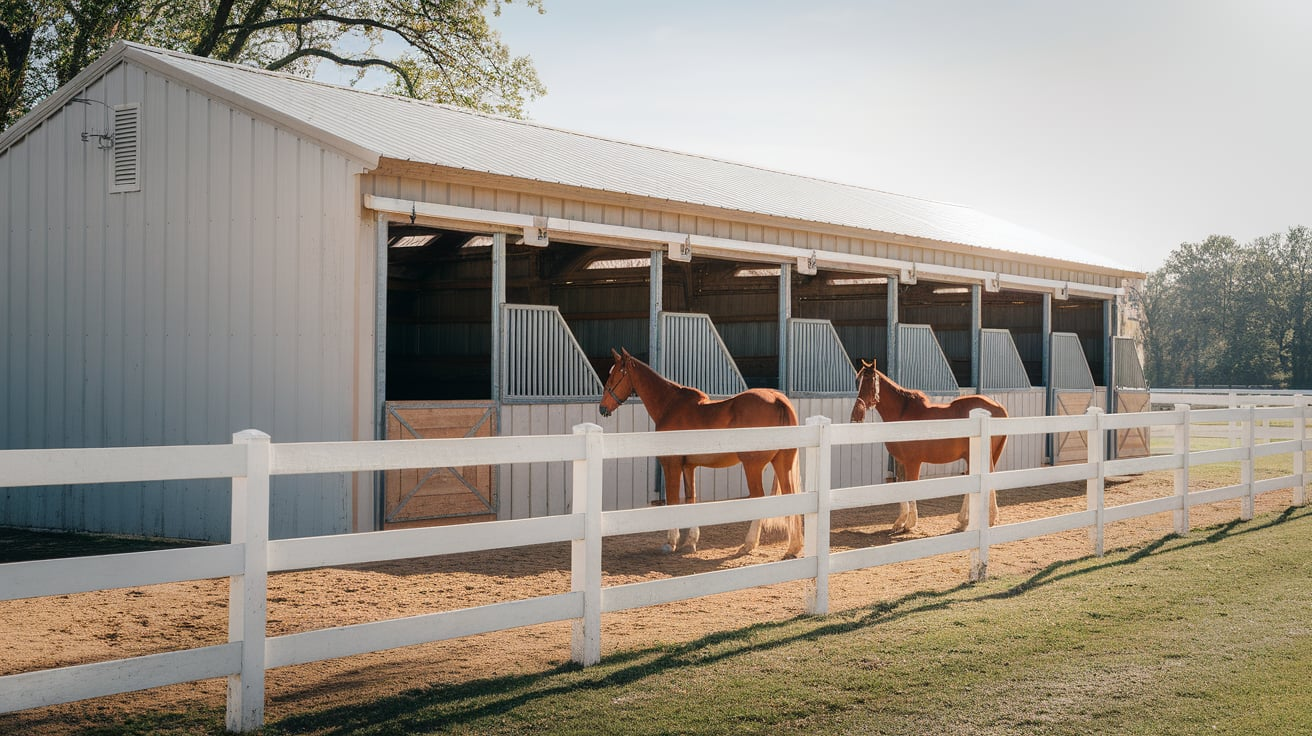
Shed row barns have a straight layout with stalls lined up side by side in a single row. These barns are open and airy, making them great for warmer climates.
They’re simple to build and give easy access to each stall. Shed row barns are mostly used for horses, but you can also use them for storage or small animals.
Some have overhangs or porches to add shade and protect from rain. This style is perfect if you want something practical and easy to manage.
12. Party Barn
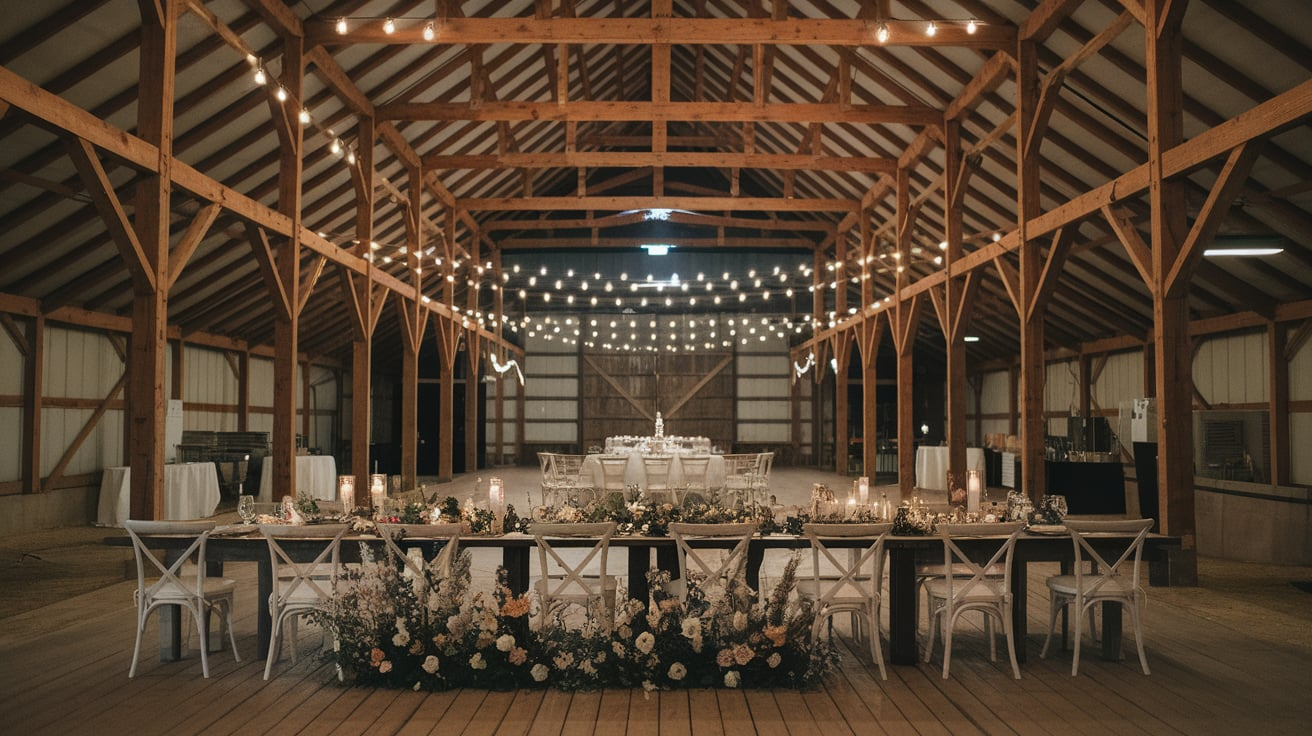
Party barns are designed for fun instead of farming. Some people fix up old barns, while others build brand new ones just for hosting events like weddings, birthdays, or family gatherings.
These barns mix rustic charm with modern touches like lighting, heating, and indoor plumbing.
You’ll often see wood beams, string lights, and large doors that open to pretty outdoor spaces.
Party barns are cozy and full of character. If you love country style and need space for entertaining, this barn style could be perfect.
13. Barndominium
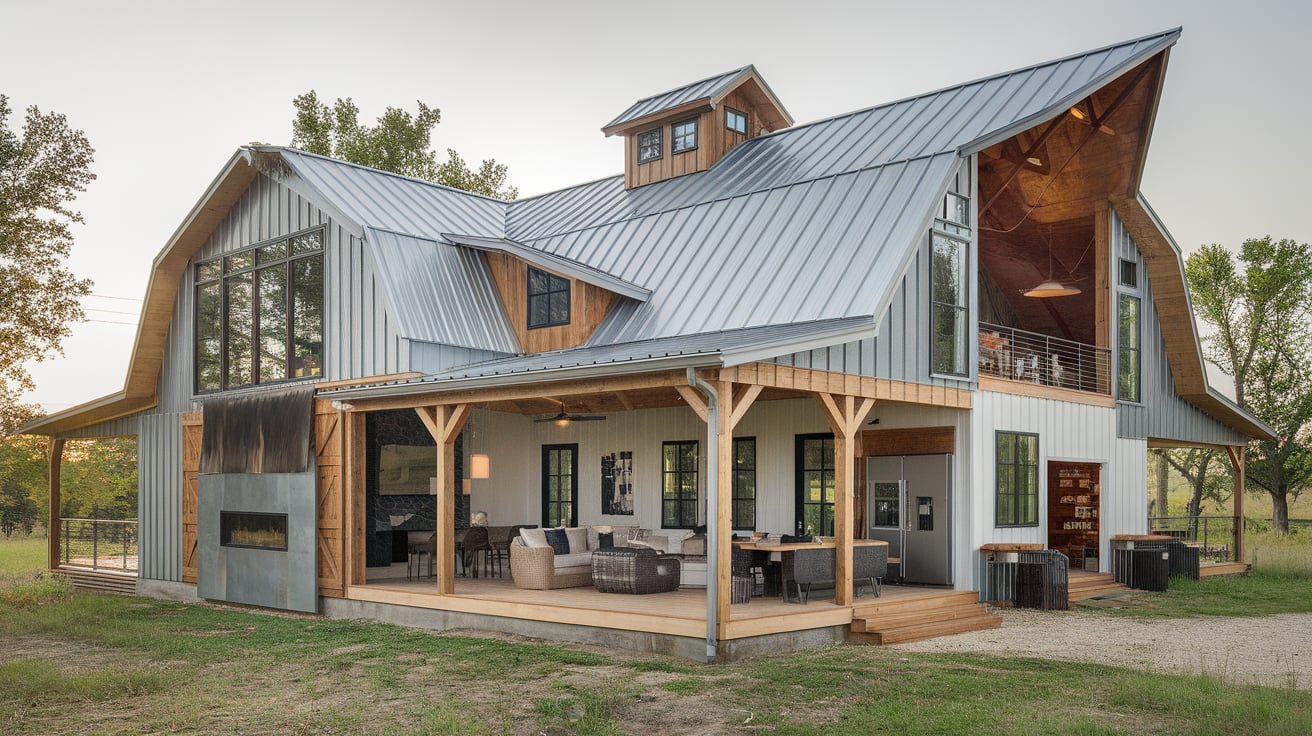
Barndominiums, also called “barndos,” are barns that double as homes. They often have living space on one side and storage or a shop on the other.
These buildings are strong, low-maintenance, and energy efficient.
Most barns are built with metal siding and roofs, but the inside can be finished just like any regular house.
I’ve seen barndominiums with open floor plans, large kitchens, and even lofts.
They’re great for people who want a unique home with room to work or play. This style is especially popular in rural areas.
14. Steel Barn
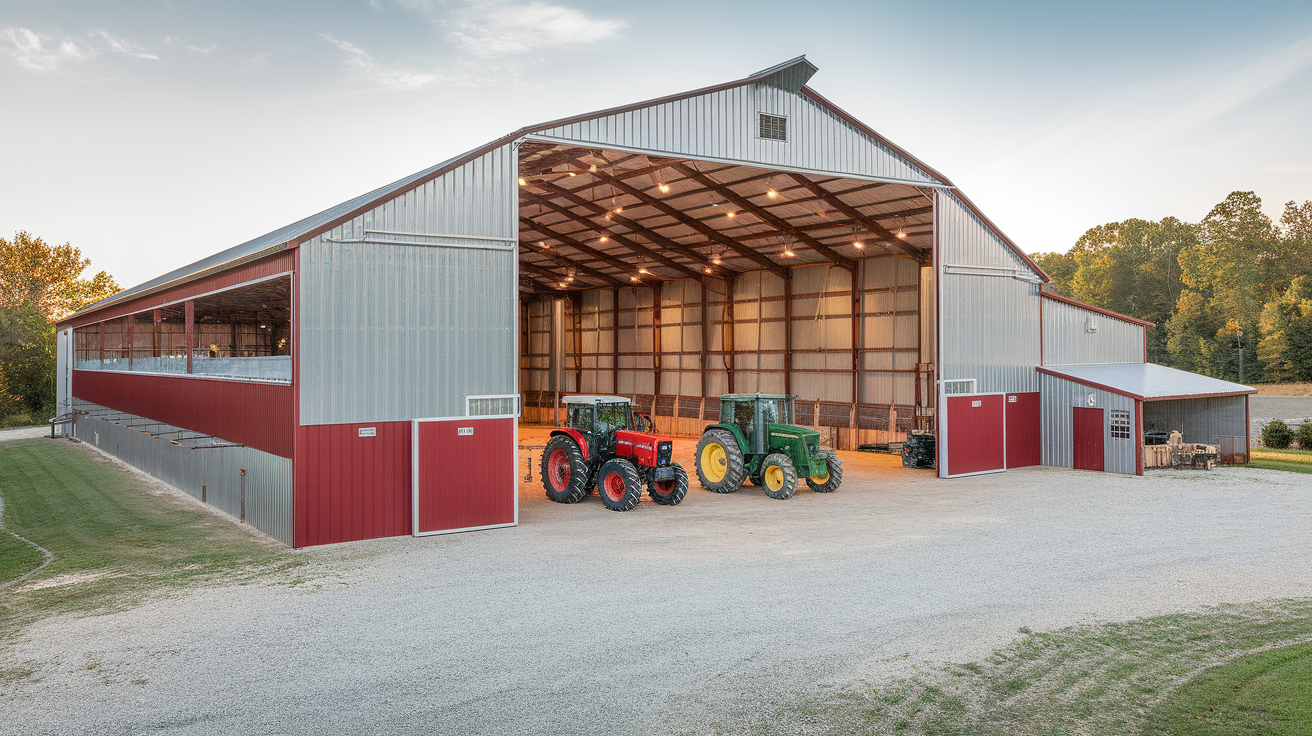
Steel barns are made completely out of metal, making them very durable and low-maintenance. They don’t rot, warp, or get eaten by bugs like wood can.
These barns are often used for storing large equipment, vehicles, or feed.
Many farms use steel barns because they’re quick to build and last a long time. You can also choose from different layouts and sizes.
Steel barns may not have the classic barn look, but they’re tough and practical for modern farming.
15. Fabric Barn (Tension Fabric Structures)
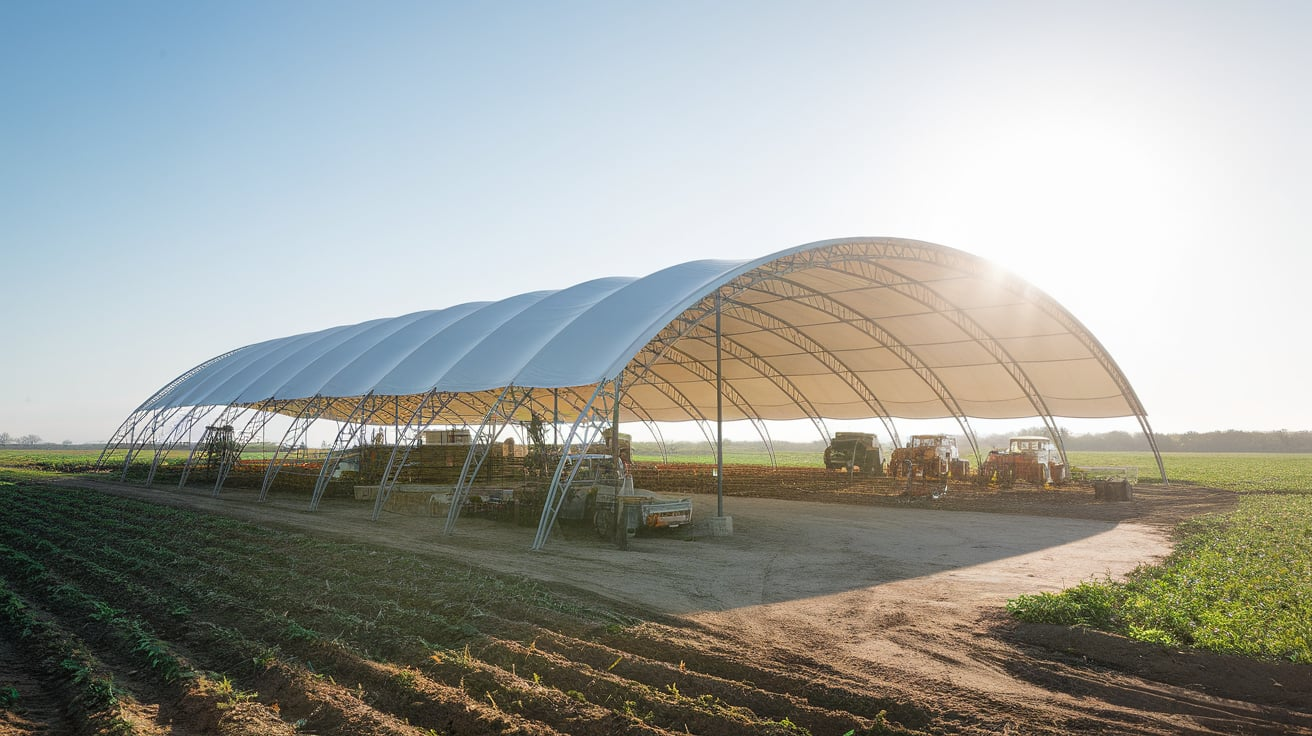
Fabric barns are made from a metal frame covered with strong, weather-resistant fabric. They let in lots of natural light, which saves energy during the day.
These barns are super quick to build and can be moved if needed. They’re often used for livestock, hay storage, or machinery.
The open space inside makes it easy to move around or change the layout. Even though they look different, fabric barns are strong and useful in all kinds of weather.
16. Modern Gable Barn
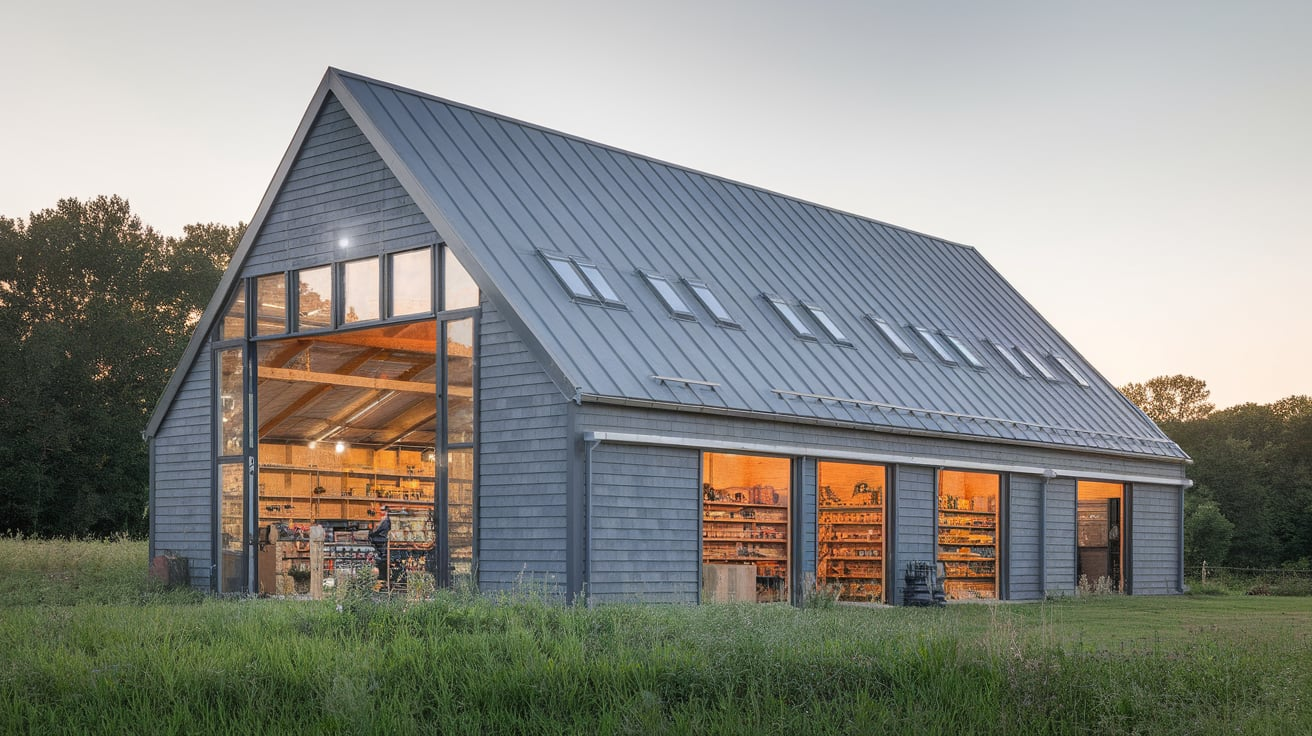
This is a modern take on the traditional gable-roof barn. It has a simple A-frame shape that helps snow and rain slide off easily.
Gable barns can be built with modern materials like metal or treated wood. They’re used for everything from animals to storage to garages.
The clean roofline gives it a neat, classic look while still offering lots of space inside. You can customize it with skylights, fans, or sliding doors.
Traditional vs. Modern Barns: Key Differences
Here’s a quick comparison of traditional and modern barns based on the key differences I’ve noticed while learning about both styles.
| Feature | Traditional Barns | Modern Barns |
|---|---|---|
| Design Style | Classic, rustic, and often timber-framed | Sleek, simple, or custom-built with modern lines |
| Materials | Mostly wood, sometimes stone | Steel, metal, prefab panels, and durable synthetics |
| Construction Method | Hand-built using traditional joinery techniques | Prefabricated, modular, or pole-frame construction |
| Purpose | Mostly for livestock, hay, and farm tools | Multi-use: storage, events, workshops, and living spaces |
| Ventilation & Lighting | Limited airflow and natural light | Designed for better airflow, lighting, and insulation |
| Maintenance | Requires regular upkeep and repairs | Often low-maintenance and built to last |
| Customization | Less flexible, often built to tradition | Highly customizable to suit different needs |
I found this comparison helpful for understanding which barn style might work better for different uses today.
Choosing the Right Barn Style
Picking the right barn style depends on what you need it for and how you want it to look.
- Think about your purpose: Are you housing animals, storing tools, or building a party space? Your goal should guide your choice.
- Look at your land: Flat ground, slopes, or tight spaces can affect what kind of barn works best.
- Check your budget: Traditional barns may cost more to build and keep up. Modern styles can be more budget-friendly.
- Decide on the look: Do you like the classic charm of wood barns or the clean lines of modern metal?
- Plan for the future: Pick a barn style that fits your current needs and leaves room to grow.
I hope these tips help you choose a barn style that fits your space, your style, and your everyday needs.
Conclusion
Barns come in all shapes and sizes, and each one has something special to offer. From the charm of old wooden barns to the clean lines of modern designs, there’s a style out there for everyone.
Some are better for storing tools, others for animals, and some are even great for hosting events or living in.
I found it helpful to learn the differences so I could better understand what would work for different needs.
If you’re planning to build, update, or just appreciate barns more, knowing the basics of each style can really make a difference.
Think about how you’ll use the space, what your land looks like, and how much upkeep you’re okay with.
The right barn style will not only look good but also make life on your land easier and more enjoyable.

